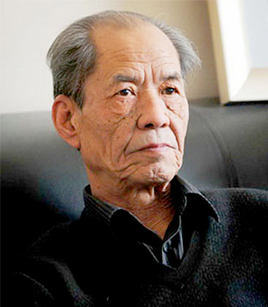
FILE PHOTO: Chen Zhongshi, author of acclaimed book White Deer Plain
Chinese writer Chen Zhongshi (1942–2016) completed White Deer Plain in 1992, for which he won the Mao Dun Literature Prize in 1997, one of the most prestigious literature prizes in China. Critics described White Deer Plain as a “realistic reflection of contemporary Chinese history.” The novel is based on the county annals of Chen’s hometown in Shaanxi Province. Chen integrated the personal lives of his characters into a grand historical background that spanned several decades—starting from the end of China’s last imperial dynasty, the Qing Dynasty (1644–1911), to the Revolution of 1911 that ended the Qing Dynasty, various warlords competing for power between the 1910s to the 1920s, the Chinese People’s War of Resistance Against Japanese Aggression between 1931 and 1945, the founding of the PRC in 1949, and until 1960s’ China. The novel is a mix of magical realism and many other avant-garde writing techniques.
White Deer Plain follows the stories of two families—the Bai and Lu families—in White Deer Village, a village known for its strict adherence to Confucian ethics. In this novel, Master Zhu, a Confucian scholar, and Bai Jiaxuan, head of the White Deer Village, held fast to age-old values and Confucian norms as Western culture started to affect China in the early 20th century, making the village a well-organized rural society dominated by Confucian culture. However, this traditional way of life was destroyed in China’s path to modernization. The younger generation chose their own roads of rebellion against the old system and the rural life style. Their rebellion fundamentally shook and dismantled the rural utopia jointly built by Zhu and Bai Jiaxuan.
Professor Chen Xiaoming describes White Deer Plain as “integrated, broad, simple, solid, and vigorous,” regarding it as “a masterpiece that closely combines Chinese cultural tradition and the features of regional culture in northeastern China,” according to China Daily.
Edited by REN GUANHONG


 PRINT
PRINT CLOSE
CLOSE